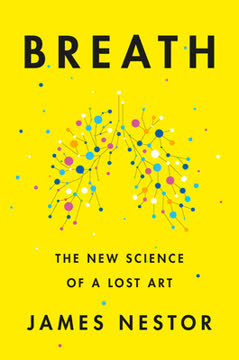つの重要なポイント
1. 即興はルールに従うことではなく、恐れずに創造すること
即興シーンの最初の重要な瞬間では、何をするかよりも何かをすることがはるかに重要である。
何かをすること。 成功する即興の鍵は、考えすぎずに行動することです。ルールに従うことや「正しい」選択をすることを心配する代わりに、どんな選択でも大胆かつ即座に行うことに集中しましょう。この恐れを知らないアプローチは、頭の中から抜け出し、遊びの状態に入るのに役立ちます。これは良い即興に不可欠です。
ルールは創造性を妨げることがある。 多くの即興クラスでは一連のルール(例:「否定しない」、「質問しない」)を教えますが、これらは実際には逆効果になることがあります。これらのルールは、考えすぎや自己検閲を引き起こし、即興の創造性を妨げることがあります。ルールに従う代わりに、自分の直感を信じ、その瞬間に行った選択に完全にコミットしましょう。
未知を受け入れる。 良い即興は、計画ではなく発見から生まれます。どこに行くか分からない強い選択をすることで、驚きと喜びの可能性を開くことができます。このアプローチは、予め決められた結果を強制しようとするよりも、より本物で魅力的なシーンを作り出します。
2. まず自分をケアし、その後パートナーをサポートする
パートナーをサポートしたいですか?今すぐ何かをしましょう。
自分のキャラクターを確立する。 シーンパートナーをサポートする最良の方法は、まず自分のキャラクターや視点を強く確立することです。これにより、パートナーは具体的に反応し、遊ぶことができます。シーン内で自分の「役割」をしっかりと確立することで、両者が基盤を築くことができます。
力、恐れではない。 多くの即興者は「パートナーをサポートする」ことが受動的または従順であることを意味すると誤解しています。実際には、最もサポート的なことは大胆な選択をし、それに完全にコミットすることです。これにより、シーンにエネルギーと勢いが生まれ、両方のパフォーマーに利益をもたらします。
積極的に聞く。 自分のキャラクターを確立したら、パートナーの選択を注意深く聞き、その確立された視点を通じて反応しましょう。これにより、シーンが自然に進行する動的なやり取りが生まれます。
3. 強い視点を確立し維持する
自分が何をしているか、どうやってそれをしているかを認識し、それをあらゆる方法で、あらゆる機会にもっと行いましょう。
選択にコミットする。 シーンでキャラクターや視点を確立したら、それに固執し、それを強化しましょう。笑いがすぐに得られない場合や不快に感じる場合でも、最初の選択を放棄しないようにしましょう。即興の魔法は、単一の強い選択を完全に探求し、高めることから生まれることがよくあります。
高めて探求する。 シーンが進行するにつれて、キャラクターの視点をより極端または具体的にする方法を探しましょう。これにより、コメディの緊張が生まれ、観客にシーンの内容を明確に伝えることができます。例えば、キャラクターが最初は軽く苛立っている場合、シーンが進むにつれてますます激怒するかもしれません。
自分のレンズを通してすべてをフィルタリングする。 新しい情報やパートナーの選択に対して、確立されたキャラクターの視点を通じて反応しましょう。これにより、一貫性が生まれ、シーン内で有機的な発見が可能になります。また、新しい情報が提示されたときに視点を放棄するという一般的な落とし穴を防ぐのにも役立ちます。
4. 即興におけるコンテキストはすべて
コンテキストはすべてにおいてすべてである。
シーンの現実を確立する。 シーンのコンテキスト(設定、関係、基礎的なダイナミクス)は、起こるすべてのことの枠組みを提供します。このコンテキストを迅速に確立し、合意することで、パフォーマーと観客の両方にシーンの「ルール」の共有理解が生まれます。
コンテキストをガイドとして使用する。 コンテキストが確立されたら、それをシーン内のすべての選択に反映させましょう。これにより、一貫性が生まれ、より微妙で具体的なユーモアが可能になります。例えば、コンテキストが緊張した就職面接である場合、すべての行動やセリフはその基礎的な緊張を反映し、高めるべきです。
コンテキスト内で期待を裏切る。 確立されたコンテキストを維持しながら、シーンの一貫性を損なうことなく、予想外の選択をする機会を探しましょう。これにより、観客に驚きとユーモアの瞬間が生まれます。
5. 確立されたコンテキスト内での驚き
コンテキスト内での驚きは通常、笑いを引き起こす。
予想外のものを見つける。 シーンのコンテキストを確立したら、その枠組み内で驚くべき選択をする方法を探しましょう。これにより、シーンの一貫性を損なうことなく、観客に喜びの瞬間が生まれます。例えば、厳格な親についてのシーンで、突然一人が愉快なダンスを始めることは、驚きながらも確立されたダイナミクスに一致します。
具体性を使用する。 キャラクターやシーンに具体的で珍しい詳細を追加することで、驚きの瞬間を作り出すことができます。一般的な反応の代わりに、奇妙に特定の情報を提供することで、パートナーや観客を驚かせることができます。この具体性はしばしば笑いを引き起こし、シーンに深みを与えます。
カーブボールを投げる。 時折、シーンとは全く関係のない要素を導入し、それを正当化して組み込む方法を見つけましょう。この技法はシーンを新鮮で予測不可能に保ち、創造的なつながりを作る挑戦を提供します。ただし、これを控えめに使用し、常にシーンの核心に戻すように努めましょう。
6. 即興における一般的な落とし穴を克服する
作品を発表する前に謝罪しないことを学びましょう。
正当化を避ける。 自分やキャラクターの行動を説明しようとする衝動に抵抗しましょう。これはしばしば恐れから来ており、シーンのエネルギーを奪うことがあります。代わりに、選択に完全にコミットし、それを合理化する必要を感じないようにしましょう。
話しすぎない。 過剰な話は、緊張や何かがうまくいくことを見つけようとするサインです。一度に短く、影響力のある一文を言い、その後パートナーが反応するためのスペースを作りましょう。これにより、より自然なリズムが生まれ、頭の中で迷子になるのを防ぎます。
沈黙を受け入れる。 多くの即興者は、恐れからすべての瞬間を対話で埋めようと急ぎます。沈黙の瞬間に慣れることを学ぶことで、強力な緊張が生まれ、パフォーマーと観客の両方にシーンで何が起こっているかを処理する時間を与えることができます。
視点を維持する。 シーンが難しくなったときに確立されたキャラクターや視点を放棄する誘惑に抵抗しましょう。代わりに、最初の選択に倍加し、それを表現する新しい方法を見つけましょう。これにより、一貫性が生まれ、シーン内でより興味深い発見が生まれることがよくあります。
7. より豊かで面白いシーンのための高度な技術
具体性は即興において最も効果的なツールの一つであり、最も簡単に行えるものです。
具体性を使用する。 キャラクター、対話、シーンの環境に非常に具体的な詳細を追加することで、より豊かで魅力的な世界が生まれます。一般的な発言の代わりに、奇妙に特定の情報を提供しましょう。これにより、笑いを引き起こす瞬間が生まれ、観客により多くのものを提供します。
「引き出し/引き戻し」技法を使用する。 一時的に確立された視点に反する行動を取り、すぐにそれに戻ることで、動的な緊張が生まれ、キャラクターの自己認識のユーモラスな瞬間が生まれることがあります。例えば、パーティーが嫌いなキャラクターが一時的にパーティーに興奮し、その後すぐにその熱意を後悔するかもしれません。
個人的な物や仕草を作る。 キャラクターに特定の物理的な物を持たせたり、独自の仕草を与えたりしましょう。これにより、描写に深みが加わり、物理的なコメディの機会が生まれます。例えば、重役が重要な会話中に常にヨーヨーをいじることが考えられます。
エネルギーと選択を変える。 パフォーマンスのパターンに気づき、それを意識的に破るようにしましょう。連続して大声で怒っているキャラクターを演じた場合、次は静かで臆病なキャラクターを演じるように挑戦しましょう。これにより、即興の幅が広がり、新鮮さが保たれます。
8. 即興者のためのオーディションとパフォーマンスのガイドライン
審査員があなたに無関心であるか、あなたがうまくいくことを望んでいないように見えるかもしれませんが、実際にはその逆です。彼らはあなたがうまくいくことを望んでいるだけでなく、あなたがうまくいくことを切望しています。
オーディションのエネルギーを受け入れる。 審査員が本当にあなたの成功を望んでいることを理解しましょう。厳粛な雰囲気に圧倒されるのではなく、それを動機として、パフォーマンスに余分なエネルギーと遊び心を持ち込みましょう。緊張した環境にもかかわらず、完全にコミットする意欲があなたを際立たせます。
範囲と多様性を示す。 オーディションやパフォーマンスでは、異なるタイプのキャラクターや感情を演じる能力を示しましょう。パターンに陥ったり、単一の「頼りになる」キャラクターに頼ったりしないようにしましょう。音量、エネルギーレベル、物理的な選択を意識的に変えて、あなたの多才さをアピールしましょう。
- 感情の範囲:喜び、怒り、悲しみ、恐れなどをシフトする
- 物理的な多様性:異なる姿勢、動き、レベル(立つ、座る、横になる)を探求する
- 声の多様性:アクセント、ピッチ、音量、話すリズムを試す
プロフェッショナルで準備万端であること。 即興を単なるカジュアルな楽しみではなく、真剣な技術として扱いましょう。演技クラスを受講してスキルを向上させ、オーディションやパフォーマンスには十分な休息と集中を持って臨み、プロフェッショナルな態度を示しましょう。これにより、あなたのコミットメントが示され、即興を軽視する人々との差別化が図れます。
9. 即興の熱力学:エネルギーとエントロピー
シーンが何であれ、そのエネルギーを失うと、二度と取り戻すことはできません。
シーンのエネルギーを理解する。 即興シーンを有限のエネルギーを持つ閉じたシステムと考えましょう。すべての選択、セリフ、行動は、シーンの全体的なエネルギーに貢献するか、またはそれを減少させます。あなたの目標は、シーンの本質に向けられたエネルギーを最大化することです。
無駄なエネルギーを最小限に抑える。 シーンの核心(その「エンジン」)に役立たない選択は、無駄なエネルギーであり、二度と取り戻せないことを認識しましょう。これには、キャラクターを壊すこと、脱線すること、確立された現実に反する選択をすることが含まれます。すべての言葉と行動が重要であるようにしましょう。
エントロピーと戦う。 物理的なシステムが時間とともに無秩序に向かうように、即興シーンも積極的に維持しなければ自然にエネルギーを失います。シーンの核心アイデアを高め、探求する方法を常に探しましょう。これには以下が含まれるかもしれません:
- ステークスを上げる
- キャラクターの関係を深める
- 確立された前提の新しい側面を探求する
- シーンの中心的な対立やダイナミクスを再確認する驚くべき方法を見つける
このエネルギー原則を理解することで、より集中し、魅力的で持続可能な即興シーンを作り出すことができます。
最終更新日:
FAQ
What's "Improvise. Scene from the Inside Out" by Mick Napier about?
- Focus on Improvisation: The book delves into the art of improvisation, emphasizing the spontaneity and creativity involved in making up scenes on the spot.
- Practical Guidance: It offers practical advice and techniques for improvisers to enhance their skills, focusing on scene work and character development.
- Personal Journey: Mick Napier shares his personal journey from aspiring veterinarian to passionate improviser, providing insights into his experiences and the evolution of his improvisational philosophy.
- Breaking Traditional Rules: The book challenges traditional improv rules, encouraging improvisers to find their own path and make bold choices.
Why should I read "Improvise. Scene from the Inside Out"?
- Unique Perspective: Mick Napier provides a fresh perspective on improvisation, challenging conventional rules and encouraging a more personal approach.
- Practical Tips: The book is filled with practical tips and exercises that can be applied immediately to improve improvisational skills.
- Inspiration for Improvisers: It serves as an inspiration for both beginners and seasoned improvisers, offering new ways to think about and approach improv.
- Comprehensive Coverage: From basic concepts to advanced techniques, the book covers a wide range of topics relevant to anyone interested in improv.
What are the key takeaways of "Improvise. Scene from the Inside Out"?
- Do Something: At the start of a scene, it's more important to do something than to worry about what to do. This helps snap you out of your head and into the moment.
- Break the Rules: Traditional improv rules can be limiting. Napier encourages improvisers to break these rules and find their own way to create engaging scenes.
- Context is Key: Understanding and maintaining the context of a scene is crucial. It provides a roadmap for the improvisers and helps the audience follow along.
- Support Through Strength: The best way to support your partner is by making strong choices yourself, which in turn supports the scene as a whole.
What is Mick Napier's approach to breaking traditional improv rules?
- Questioning the Rules: Napier questions the effectiveness of traditional improv rules, suggesting they can hinder creativity and spontaneity.
- Focus on Play: He emphasizes the importance of play and discovery over adhering to a set of predefined rules.
- Encouraging Bold Choices: Napier encourages improvisers to make bold, fearless choices that may not align with conventional rules but enhance the scene.
- Personal Experience: His approach is informed by his own experiences and observations in the world of improv, where he found that breaking rules often led to more engaging performances.
How does Mick Napier suggest improvisers handle fear in scenes?
- Acknowledge Fear: Recognize that fear is a natural part of improvisation and can lead to protective behaviors that hinder performance.
- Embrace Playfulness: Shift focus from fear to playfulness, allowing for more spontaneous and creative choices.
- Stay Out of Your Head: Avoid overthinking by making immediate choices and committing to them, which helps reduce fear-driven hesitation.
- Use Fear as Fuel: Transform fear into a driving force for bold and unexpected choices that can enhance the scene.
What exercises does "Improvise. Scene from the Inside Out" recommend for improvisers?
- Dada Monologue: Engage in nonsensical monologues to free up random associations and stimulate creativity.
- Word Association: Practice quick associations with random words to enhance spontaneity and storytelling skills.
- Gibberish Scenes: Use gibberish to focus on emotional expression and character development without relying on words.
- Solo Character Switches: Rapidly switch between different characters to build versatility and quick thinking.
What is the significance of context in improvisation according to Mick Napier?
- Defines the Scene: Context provides a framework for the scene, helping improvisers and the audience understand what is happening.
- Guides Choices: It serves as a guide for making choices that are consistent with the established reality of the scene.
- Enhances Engagement: A well-defined context keeps the audience engaged by providing a clear and coherent narrative.
- Allows for Surprises: Within a strong context, improvisers can introduce surprising elements that enhance the scene without confusing the audience.
How does Mick Napier address the concept of supporting your partner in improv?
- Self-Support First: Napier emphasizes taking care of yourself first by making strong choices, which inherently supports your partner.
- Power Over Fear: Support your partner by bringing power and confidence to the scene, rather than fear and hesitation.
- Mutual Creation: Both partners contribute to the scene's development through their individual choices, creating a shared reality.
- Listening and Responding: Effective support involves actively listening and responding through your character's perspective, rather than simply agreeing.
What advanced improvisation techniques are discussed in "Improvise. Scene from the Inside Out"?
- Opposite Choices: Make unexpected choices that defy typical associations, adding depth and surprise to scenes.
- Specificity: Use detailed and specific language to enrich scenes and provide clearer context for the audience.
- Curve Balls: Introduce seemingly unrelated elements into a scene and find ways to integrate them, adding complexity and interest.
- Heightening: Continuously build on your character's point of view to maintain energy and drive the scene forward.
What are some common problems in improv scenes and how does Mick Napier suggest addressing them?
- Too Much Exposition: Avoid overloading scenes with information; focus on strong initiations and let details emerge naturally.
- Talking Too Much: Be mindful of over-talking; practice concise communication and allow space for your partner to contribute.
- Justifying Actions: Resist the urge to justify actions or behaviors; trust the scene and let it unfold without over-explanation.
- Pausing and Hesitation: Combat pauses by committing to immediate responses, keeping the scene dynamic and engaging.
What are the best quotes from "Improvise. Scene from the Inside Out" and what do they mean?
- "Do something, anything." This quote emphasizes the importance of action over inaction at the start of a scene, encouraging improvisers to break free from hesitation.
- "Support your partner with your power, not your fear." Napier highlights the value of bringing strength and confidence to a scene, which inherently supports your partner.
- "Improvisation, always different, always the same." This reflects the paradox of improv, where each scene is unique yet often follows familiar patterns, urging improvisers to break the mold.
- "The magic of improvisation doesn't happen because you did or did not follow rules." This quote challenges the reliance on traditional rules, suggesting that true creativity comes from personal expression and bold choices.
How does Mick Napier's personal journey influence his approach to improvisation?
- Unexpected Path: Napier's transition from aspiring veterinarian to improviser highlights the unpredictable nature of creative pursuits.
- Passion for Improv: His discovery of improvisation as a way to perform without rehearsals fueled his passion and shaped his approach.
- Forming a Point of View: His experiences in Chicago's improv scene helped him develop a unique perspective on what makes improvisation work.
- Valuing Rehearsal: Despite his initial desire to avoid rehearsals, Napier now appreciates their value, balancing spontaneity with preparation in his teachings.
レビュー
読者は、ナピアの率直で実直なインプロへのアプローチを称賛し、大胆な選択と自信の重要性を強調する点を評価している。多くの人々が、本書のエクササイズや実践的なアドバイスがパフォーマンスの向上に非常に役立つと感じている。一部の批評家は、特にジェンダーに関する本書の時折の物議を醸す発言に言及している。全体として、さまざまな経験レベルの即興演技者が本書を刺激的で有用だと感じており、インプロに真剣に取り組む人々にとって必読書としてしばしば推奨されている。








